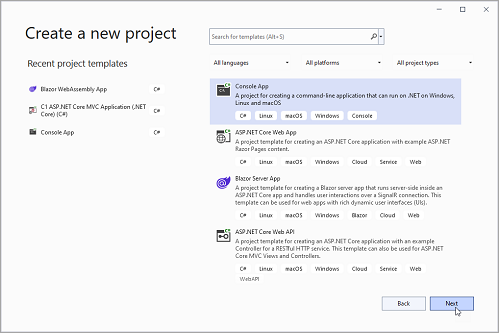- Data Connectors Overview
- Free and Open Source Software (FOSS) License
- Redistributable Files
- OAuth Authorization
- Licensing
- ADO.NET provider for CSV
- ADO.NET provider for Dynamics 365 Sales
- ADO.NET provider for Google Analytics
- ADO.NET provider for JSON
- ADO.NET provider for Kintone
- ADO.NET provider for OData
- ADO.NET provider for QuickBooks Online
- ADO.NET provider for Salesforce
- ADO.NET provider for ServiceNow
- ADO.NET provider for Magento
- ADO.NET provider for Snowflake
- SQL Compliance
- Incremental Caching
- Proxy Server
- Logging
- Scaffolding
- DbFactory Support
- Visual Studio Integration
- Walkthrough
Getting Started
The ADO.NET provider for JSON provides a wide range of features that enable connectivity to JSON from .Net applications. The documentation will help you understand the C1.AdoNet.JSON namespace, which includes all the available classes that can be used to connect and retrieve data from JSON.
DataConnectors are mostly used in combination with other ComponentOne components, such as DataEngine and FlexPivot. The procedure below describes how to use the DataConnector in a console application within Visual Studio.
How to create a new Console Application
The ADO.NET provider for JSON can be used in any application. In this guide, a console application is created:
- Open Visual Studio.
- Select Create a new project from the Get Started pane.
- In the Create a new project window, select Console Application and click Next, as in the screenshot below:

- In the Configure your new project window, write your project name, choose a location to save your project, and click Create.
How to add the NuGet packages
To use the ADO.NET provider for JSON in an application, the respective NuGet package should be added:
- From the Project menu, select Manage NuGet Packages.
- In the NuGet Package Manager, click the Package source drop-down and select nuget.org
- In the left pane of the Browse tab, select C1.AdoNet.JSON
- In the right pane of the Browse tab, click Install to add the reference to the package.
How to use ADO.Net provider for JSON to retrieve data
Follow the steps provided below to learn and implement data retrieval using ADO.NET provider for JSON.
Create a connection string to set up a connection to a local JSON resource by setting Uri, DataModel, and JsonPath properties.
static string documentConnectionString = $"Data Model=Document;Uri='json_bookstore.json';Json Path='$.bookstore.books'";Fetch the data using C1JsonConnection class. The connection string using corresponding attributes is passed as an argument. For more information on creating connections, see Creating Connection.
C1JsonConnection implements the ADO.NET DbConnection, similar to standard ADO.NET connection object that retrieves a single result set of all the data that matches a query. Once the connection is established, it retrieves the data from the source as shown in the following code.static void ReadData() { Console.WriteLine("Query all Accounts..."); //Fetch data using(var con = new C1JsonConnection(documentConnectionString)) { con.Open(); var table = con.GetSchema("columns", new string[] { "books" }); ShowDataTable(table); var cmd = con.CreateCommand(); //Provide command cmd.CommandText = "Select * From books"; var reader = cmd.ExecuteReader(); } } //Display Table static void ShowDataTable(DataTable table, int length = 25) { foreach (DataColumn col in table.Columns) { Console.Write("{0,-" + length + "}", col.ColumnName); } Console.WriteLine(); foreach (DataRow row in table.Rows) { foreach (DataColumn col in table.Columns) { if (col.DataType.Equals(typeof(DateTime))) Console.Write("{0,-" + length + ":d}", row[col]); else if (col.DataType.Equals(typeof(decimal))) Console.Write("{0,-" + length + ":C}", row[col]); else Console.Write("{0,-" + length + "}", row[col]); } Console.WriteLine(); } }


